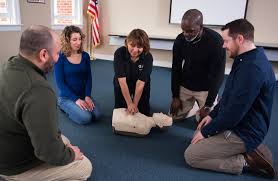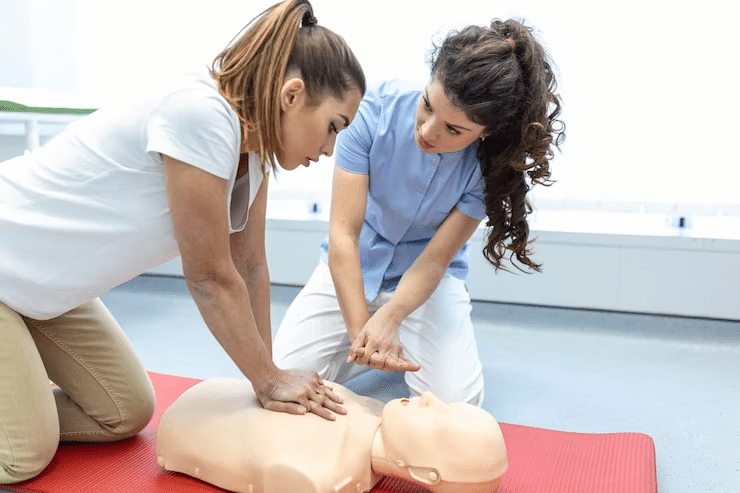Introduction
In a world where mishaps can take place at any moment, understanding exactly how to react efficiently can be the difference in between life and fatality. Cardiopulmonary resuscitation (CPR) is an essential skill that every person must think about discovering. However with many choices available, browsing the globe of CPR courses can really feel overwhelming. So, which one is appropriate for you? This post aims to guide you via the various CPR programs available, aiding you choose the most effective fit for your needs.



Understanding mouth-to-mouth resuscitation and Its Importance
What is CPR?
Cardiopulmonary resuscitation (CPR) is an emergency treatment done on people whose heart has actually quit beating or that have actually stopped breathing. It entails chest compressions and rescue breaths to preserve blood flow and oxygenation till advanced medical aid arrives.
Why is mouth-to-mouth resuscitation Important?
The value of mouth-to-mouth resuscitation can not be overstated. Statistics show that prompt CPR can increase or even triple a target's possibilities of survival after heart attack. Knowing CPR not just equips you with the abilities to save lives however likewise boosts your self-confidence in emergency situations.
When Should You Use CPR?
CPR must be started when an individual is less competent, not taking a breath normally, or exhibiting indications of serious distress. Being able to determine these conditions swiftly can conserve priceless minutes.
Navigating the Globe of Mouth-to-mouth Resuscitation Courses: Kinds Available
Basic Life Assistance (BLS) Courses
What is BLS?
BLS courses are developed for doctor and professionals who need to maintain accreditation in basic life assistance strategies. These programs cover important abilities such as top quality chest compressions, respiratory tract administration, and utilizing an Automated External Defibrillator (AED).
Who Must Take BLS Courses?
If you're a healthcare employee, caregiver, or someone wanting to boost their medical understanding, a BLS training course might be proper for you.
Heartsaver ® CPR/AED Courses
What are Heartsaver ® Courses?
The Heartsaver ® program provides programs customized for laypersons. It concentrates on grownup, youngster, and baby CPR techniques together with AED usage.
Who Must Take into consideration Heartsaver ® Courses?
These programs are perfect for instructors, trainers, parents, and anyone responsible for others' security that might require to act in an emergency situation.
First Aid Program vs. Emergency Treatment and CPR Course
What Does an Emergency treatment Course Cover?
An emergency treatment course normally covers the basics of treating injuries such as cuts, burns, cracks, and choking cases without concentrating on resuscitation methods.
Why Combine Emergency treatment with CPR Training?
Combining first aid training with a mouth-to-mouth resuscitation program equips you with comprehensive emergency reaction skills. By comprehending both first aid and resuscitation methods, you'll be much better prepared to manage numerous emergencies.
Advanced Cardiac Life Support (ACLS)
What is ACLS Training?
ACLS training goes beyond basic life assistance by consisting of sophisticated clinical abilities like providing drugs and taking care of breathing failure.
Who Demands ACLS Certification?
ACLS qualification is often required for medical CPR Course care experts operating in crucial care setups such as healthcare facilities or emergency rooms.
Choosing the Right Program for You: Elements to Consider
Your Level of Experience
Before joining in any program, examine your current level of knowledge concerning first aid and mouth-to-mouth resuscitation strategies. Novices might gain from starter programs like Heartsaver ®, while knowledgeable people might select even more extensive training like BLS or ACLS.
Your Responsibilities
Consider your role in your area or office. If you're responsible for others' security-- like a train or teacher-- you could wish to invest time in extensive first aid and CPR training.
Course Style: In-Person vs. Online Options
In-Person Training Advantages
- Hands-on experience Immediate comments from instructors Networking opportunities
Online Training Advantages
- Flexibility Convenience Often less expensive
Understanding Accreditation: What You Required to Know
Duration of Certifications
Most qualifications last in between two to three years prior to needing revival; nevertheless, this varies by organization.
Recognized Organizations Offering Certification
Several organizations provide Find out more respectable qualification programs:
- American Heart Association (AHA) Red Cross National Security Council (NSC)
Finding Quality Training Providers
Researching Regional Options
Look into local health centers or community centers offering emergency treatment courses to locate hassle-free options near you.
Online Resources
Many companies use on the internet training components that supply accreditation upon completion-- an exceptional option if time constraints are an issue.
Costs Associated with Different Courses
|Course Kind|Ordinary Expense|| ---------------------|----------------|| Fundamental Life Support|$100 - $150|| Heartsaver ®|$50 - $80|| Emergency treatment Just|$60 - $100|| ACLS|$200 - $300|
How to Prepare for Your Course
Pre-Course Recommendations
Before attending course:
Review any type of provided materials. Wear comfortable clothing. Bring any type of necessary materials provided by your instructor.
What Takes place After Completion?
After successfully completing your picked training course:
You'll get a certification card. Keep it upgraded according to your service provider's guidelines. Apply what you have actually learned on a regular basis via practice sessions if possible!
Common Misconceptions About Emergency treatment and CPR Training
Misconception 1: Only Healthcare Professionals Need This Training
This might not be additionally from the reality! Everyone can gain from knowing how to carry out first aid or carry out CPR!
child care emergency trainingMisconception 2: I'll Never Need to Utilize It
Emergency situations arise all of a sudden; being prepared is always wise!
FAQs About Emergency treatment Certificates & Courses
How long does it take to complete a regular emergency treatment course? Many first aid training courses take around four hours however can differ depending upon material depth.
Will I obtain a certification after completing my course? Yes! A lot of trustworthy organizations supply certificates upon effective completion.
How typically do I need to restore my certification? Usually every two years; talk to your licensing organization.
Can I take these courses online? Definitely! Numerous organizations offer on the internet options allowing flexibility.
Are there age requirements for taking these courses? Usually no age limitation exists; nonetheless, parental approval may be required under particular circumstances.
Do employers need workers to have these certifications? Many companies do choose personnel trained in first aid/CPR-- it shows dedication in the direction of work environment safety!
Conclusion: Your Trip Begins Now!
With many options readily available when it comes down deciding on which training course fits best-- whether it's Basic Life Support (BLS), Heartsaver ®, Advanced Cardiac Life Support (ACLS), or even simply general Emergency treatment-- the crucial takeaway stays clear: Taking positive actions towards boosting your knowledge base around emergency treatment & & cardiopulmonary resuscitation will ultimately equip YOU! By spending time into browsing the world of mouth-to-mouth resuscitation training courses properly today makes sure readiness tomorrow-- since every 2nd counts during emergencies!